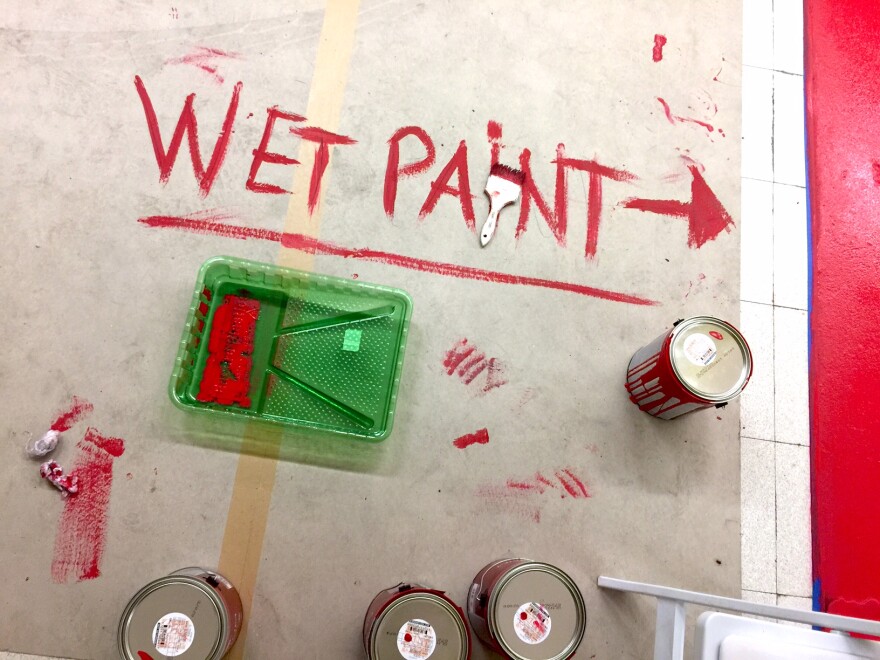Starting today through Sunday, the Smithsonian Asian Pacific American Center is staging a pop up in the old Foodland location at Ala Moana Center. Audiences are invited to hear and see over fifty artists and thinkers from across the country and Hawai‘i filling the space with their work. HPR’s Noe Tanigawa stopped by for a preview.

‘Ae Kai: A Culture Lab on Convergence, runs July 7, through Sunday, July 9, 2017, 11am to 9pm, at Ala Moana Center in the former Foodland location on the ground floor.
The ‘Ae Kai Culture Labis a bubbling cauldron of performance, hip hop, graffiti, music, poetry, street art, movement, and more , all in service of examining identity, history and contemporary culture. For example, Ricky Tagaban is Tlingit, an Alaskan Native from Juno.
Tagaban: I think it’s really special to know I come from such a specific place and our genealogy goes back ten thousand years in that place. And to have a way of life that came from occupying that space is really special.
Is your everyday life there different from our life here in Hawai‘i?
Tagaban: I wake up and weave. And go fishing. It’s probably pretty similar.
Not really.
Tagaban weaves in the Chilkat tradition using cedar bark and wool on an upright loom, Chilkat use abstract shapes and patterns inspired by nature, and Tagaban has applied them to everything from traditional leggings to iPhone cases.
Tagaban: I was asked to weave because of my gender identity. That’s why I was asked to learn this traditional style of weaving, because it’s for two spirit people or women. Knowing that this really prestigious art form was reserved for people with a different gender identity is special. Then to be able to express my gender identity through drag is kind of a newer thing than Chilkat weaving but it’s kind of on the same vein, if that makes sense?

Both very different pursuits hinge on Tagaban’s gender identity. He will blend them wearing woven cedar bark and panty hose in a drag queen performance at ‘Ae Lai. Los Angeles musician low leaf blends voice, electric harp, piano and rhythms for music that works on a metaphysical level.
low leaf: The way I view music is, it’s not so much music, as it is entrainment. Are you familiar with entrainment? It’s like if you have two vibrations in the same space, the dominant one will eventually entrain the other one to be in sync with it.
According to low leaf, conceivably, music could work in this way, drawing what’s around into its vibration.
low leaf: I strive to live my life as music. So I’m constantly checking myself and making sure that I’m being the best, most authentic, free expression that I can at all times.
Over fifty artists, scholars and performers are participating in `Ae Kaioverall, twenty plus are from Hawai‘i including Solomon Enos, Carl Pao, Maika‘i Tubbs, Keanu Sai, John “Prime” Hina, Maile Andrade, TravisT, Wooden Wave, Aloha Got Soul, and more! Ideas, stimulation, conversation, provocation, in many many forms await at the ‘Ae Kai Culture Lab this weekend.




